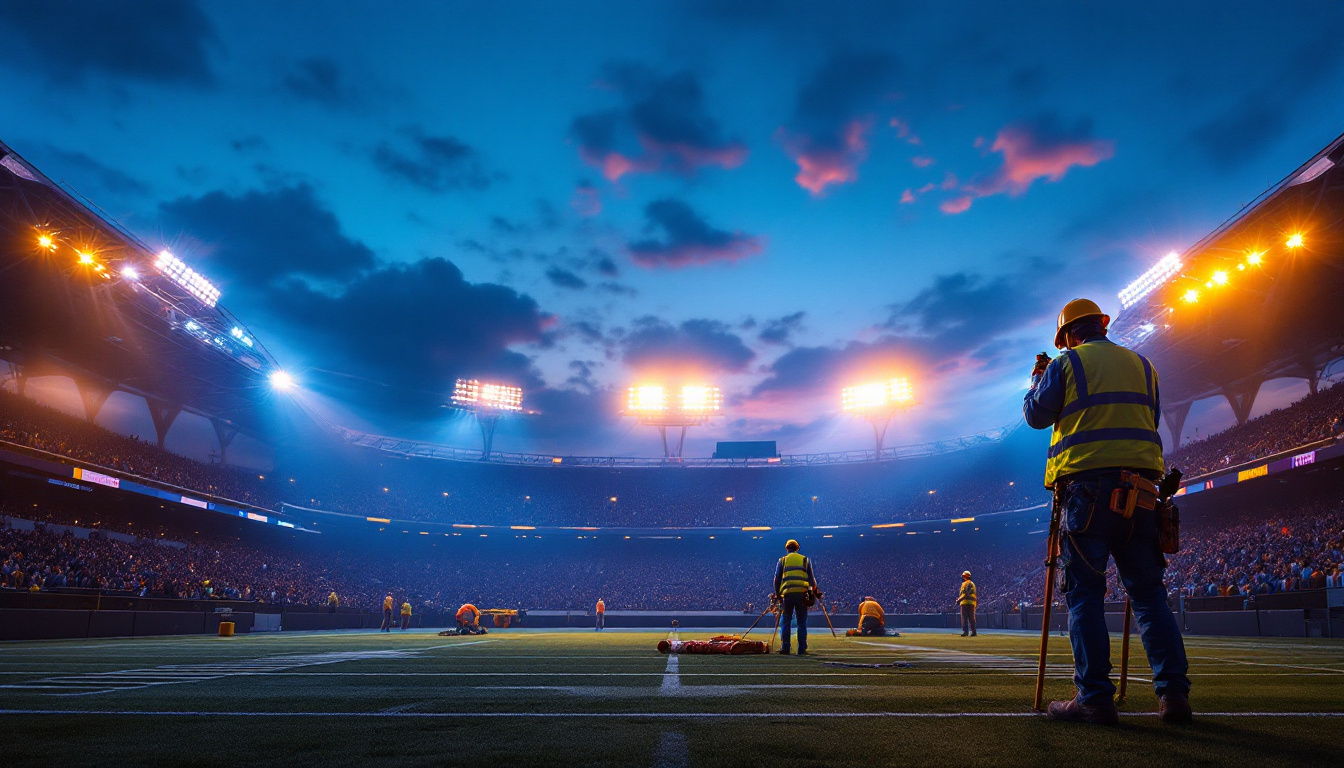

As the demand for outdoor living spaces continues to grow, landscape lighting has become an essential aspect of residential and commercial design. For lighting contractors, understanding the nuances of landscape lighting can set them apart in a competitive market. This article explores key concepts, design principles, and practical considerations that every lighting contractor should know to excel in landscape lighting projects.
Landscape lighting serves multiple purposes, from enhancing aesthetic appeal to improving safety and security. Properly designed lighting can transform a garden or patio into a stunning visual experience, allowing homeowners to enjoy their outdoor spaces even after sunset.
Moreover, effective landscape lighting can deter potential intruders by illuminating dark areas around a property. This dual functionality—beauty and security—highlights the importance of incorporating landscape lighting into any outdoor design project.
One of the primary reasons homeowners invest in landscape lighting is to enhance the visual appeal of their properties. Well-placed lights can highlight architectural features, illuminate pathways, and draw attention to beautiful plants or water features. By using different types of fixtures, contractors can create a layered lighting effect that adds depth and dimension to outdoor spaces.
For instance, uplighting can accentuate trees and tall structures, while downlighting can create a soft glow on patios and walkways. Understanding how to balance these techniques is crucial for achieving a harmonious design. Additionally, the use of color-changing LED lights can bring a dynamic element to outdoor spaces, allowing homeowners to customize their ambiance for different occasions, from festive gatherings to intimate dinners under the stars. This versatility not only enhances the aesthetic but also allows for personal expression through lighting choices.
Safety is a top priority for homeowners, and landscape lighting plays a vital role in minimizing accidents and deterring crime. By illuminating walkways, stairs, and dark corners, contractors can help prevent trips and falls, ensuring that outdoor areas are safe for family and guests.
Additionally, well-lit exteriors can discourage potential intruders. When a property is brightly lit, it becomes less appealing for those with ill intentions. Lighting contractors should emphasize this aspect when discussing landscape lighting options with clients. Furthermore, incorporating motion-sensor lights can significantly enhance security by automatically illuminating areas when movement is detected, providing an extra layer of protection. These sensors can be strategically placed near entry points, garages, and driveways to ensure that homeowners feel secure in their outdoor environments, especially during the darker months of the year.
Understanding the various types of landscape lighting fixtures is essential for any contractor. Each type serves a specific purpose and can dramatically affect the overall design and functionality of the lighting scheme.
Path lights are commonly used to illuminate walkways and driveways. They provide safety by marking the path for pedestrians while also adding a decorative element to the landscape. These fixtures come in various styles, from modern to traditional, allowing contractors to match them with the overall aesthetic of the property.
When installing path lights, it’s crucial to consider the spacing and height of the fixtures. Properly spaced lights ensure even illumination without creating overly bright spots or dark areas. Additionally, the choice of bulb can influence the ambiance; warm white LEDs create a welcoming atmosphere, while cooler tones can lend a more contemporary feel. Incorporating solar-powered path lights can also be an eco-friendly option, reducing energy costs and providing flexibility in placement.
Spotlights and floodlights are ideal for highlighting specific features in the landscape, such as trees, sculptures, or architectural elements. Spotlights provide focused beams of light, making them perfect for accentuating details, while floodlights offer a wider beam for illuminating larger areas.
Contractors should be mindful of the angle and distance when positioning these lights. The goal is to create a dramatic effect without causing glare or overpowering the surrounding environment. Additionally, using dimmable options can enhance versatility, allowing for adjustments based on the time of day or specific events. For instance, during gatherings, a brighter setting can create a lively atmosphere, while a softer glow can provide a more intimate setting for quiet evenings.
Deck and step lights are essential for enhancing safety in outdoor living spaces. These fixtures can be integrated into stairs, railings, or deck surfaces, providing subtle illumination that guides users safely through the area.
In addition to safety, deck and step lights can add a stylish touch to outdoor spaces. By choosing fixtures that complement the overall design, contractors can create a cohesive look that enhances the beauty of the landscape. Furthermore, the use of smart lighting technology can elevate the functionality of these fixtures. Homeowners can control the brightness and color of the lights through mobile apps, allowing them to customize their outdoor experience based on mood or occasion. This integration not only adds convenience but also promotes energy efficiency by enabling users to turn off lights remotely when not in use.
Effective landscape lighting design is not just about choosing the right fixtures; it involves a thoughtful approach to how light interacts with the environment. Several principles can guide contractors in creating an effective lighting plan.
Layering light is a fundamental principle in landscape lighting design. By combining different types of lighting—such as ambient, task, and accent lighting—contractors can create a balanced and dynamic atmosphere. Ambient lighting provides general illumination, while task lighting focuses on specific areas, and accent lighting highlights key features.
This layered approach allows for versatility in the design, enabling homeowners to enjoy their outdoor spaces in various ways, whether for entertaining guests or relaxing alone. For instance, during a lively outdoor gathering, ambient lighting can set the mood, while task lighting can illuminate dining areas for meal preparation and serving. Meanwhile, accent lighting can draw attention to beautiful garden sculptures or water features, creating an enchanting ambiance that enhances the overall experience.
Another critical design principle is creating depth and dimension through lighting. By using techniques such as uplighting and downlighting, contractors can add visual interest and texture to the landscape. For example, uplighting a tree can create stunning shadows on the ground, while downlighting can cast a gentle glow on seating areas.
Contractors should also consider the use of color temperature. Warmer tones can create a cozy atmosphere, while cooler tones may evoke a more modern feel. Understanding how different colors interact with the landscape is essential for achieving the desired effect. Moreover, the strategic placement of lights can enhance the natural contours of the land, making slopes appear more dramatic and flat areas feel more inviting. By playing with angles and intensities, contractors can transform a simple garden into a captivating nighttime retreat.
As landscape lighting becomes more popular, the issue of light pollution has gained attention. Contractors should be mindful of how their lighting designs impact the surrounding environment, particularly in residential areas. Excessive or poorly directed lighting can disrupt local wildlife and diminish the night sky experience for residents.
To mitigate light pollution, contractors can use fixtures with shields or focused beams to direct light where it’s needed most. Additionally, incorporating timers or dimmers can help control the intensity of the lighting, further reducing its impact on the environment. Furthermore, educating clients about the benefits of using energy-efficient LED lights can not only lower energy consumption but also minimize glare and light spillage. By promoting a responsible approach to landscape lighting, contractors can help preserve the beauty of the night sky while still providing functional and aesthetic illumination for outdoor spaces.
Once the design is established, practical considerations come into play. Proper installation is crucial for ensuring that the landscape lighting functions effectively and lasts for years to come.
One of the first steps in installation is determining the wiring and power supply. Contractors must assess the electrical requirements of each fixture and ensure that the power supply can accommodate the total load. This may involve running low-voltage wiring or connecting to existing electrical circuits.
It’s essential to plan the layout carefully to avoid potential hazards and ensure that all wiring is hidden from view. Using underground conduits can protect the wiring and maintain the aesthetic appeal of the landscape.
Landscape lighting requires regular maintenance to ensure optimal performance. Contractors should educate homeowners about the importance of keeping fixtures clean and free from debris. Regular checks on the wiring and connections can also prevent potential issues down the line.
Additionally, contractors can offer maintenance services as part of their business model. This not only provides added value to clients but also creates ongoing relationships that can lead to future projects.
In conclusion, landscape lighting is a multifaceted field that offers lighting contractors numerous opportunities for creativity and innovation. By understanding the importance of landscape lighting, the various types of fixtures available, and the principles of effective design, contractors can elevate their projects and provide exceptional service to their clients.
As outdoor spaces continue to evolve, staying informed about trends and best practices in landscape lighting will be crucial for success. By embracing these principles and practical considerations, lighting contractors can illuminate the path to a thriving business in landscape lighting.
Ready to take your landscape lighting projects to the next level? At LumenWholesale, we provide lighting contractors with the highest quality, spec-grade lighting products at prices that can’t be beaten. Say goodbye to local distributor markups and hello to our extensive selection that meets rigorous industry standards. With free shipping on bulk orders, you can trust that you’re getting premium lighting solutions at the best value, with no hidden costs. Elevate your outdoor lighting designs today and experience the best in wholesale lighting with LumenWholesale.

Discover essential insights for lighting contractors on electric vehicle chargers, including installation tips, industry standards, and the latest technological advancements to stay ahead in the evolving market..

Discover the essential role of light ballasts in modern lighting systems and why every lighting contractor should be well-versed in their functions.

Discover essential insights for lighting contractors in our comprehensive guide on stadium lights.

Discover how industrial warehouse LED lighting can revolutionize your lighting installation projects.
Get notified when NEW deals are released.
Optimize your budget with wholesale discounts.
Only top-quality, specification-grade lighting products.
No additional costs at checkout - what you see is what you pay.
We understand the unique needs of contractors.